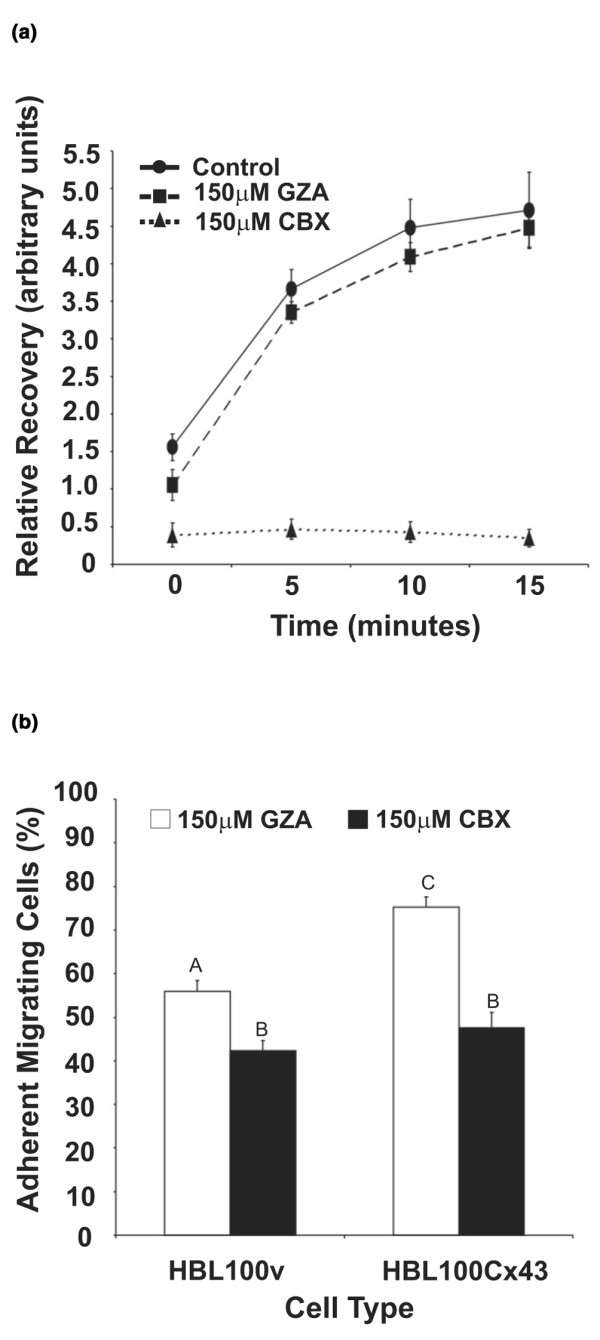Figure 6.

Carbenoxolone (CBX) blocks gap junctional intercellular communication (GJIC) in human microvascular endothelial cell (HMVEC) monolayers and decreases tumor cell diapedesis. (a) To determine the extent by which GJIC in HMVEC was blocked by CBX, monolayers were pre-treated with 150 μM CBX or the inactive analog glycyrrhizic acid (GZA) and analyzed by fluorescence recovery after photo-bleaching (FRAP). FRAP analysis revealed that fluorescence recovery by homocellular gap junctional coupling was blocked by 150 μM CBX (triangles), while recovery of fluorescence was observed in untreated (circles) or GZA treated monolayers (rectangles). Data represent three independent experiments. (b) To determine the effect of blocking gap junctional coupling on diapedesis, HMVEC monolayers were pre-treated with 150 μM CBX, or the inactive analog GZA and HBL100v cells or cells expressing functional Cx43 (HBL100Cx43) were co-cultured for 7 h with HMVEC monolayers, fixed and labeled for F-actin. Tumor cells were scored according to the criteria specified in Fig 1. In comparison to the inactive analog (GZA), treatment with CBX resulted in a significant decrease in the number of migrating HBL100v and HBL100Cx43 cells. Data are expressed as the mean percentage of three independent experiments ± SEM performed in duplicate or triplicate. Identical letters over bars indicate no statistical significance while different letters signify statistical significance (p < 0.01).
